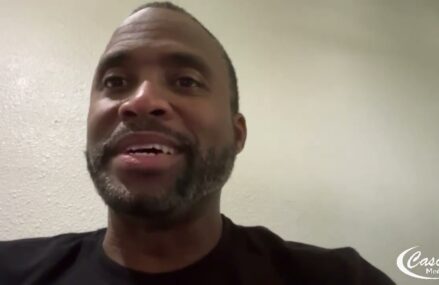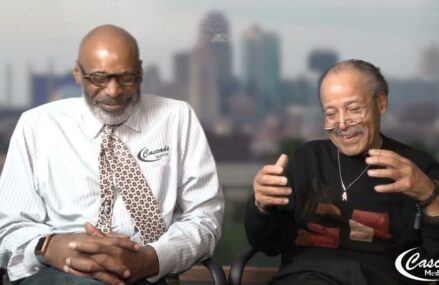By JOSH FUNK
FILE – In his Friday, Sept. 28, 2012, file photo, Engineer Ed Dickens leans out of the cab Union Pacific’s historic steam Locomotive No.844 as it is moved to the California Railroad Museum in Old Sacramento, Calif. Union Pacific Corp. reports quarterly financial results before the market opens on Thursday, April 18, 2013. (AP Photo/Rich Pedroncelli, File)
OMAHA, Neb. (AP) — The sharp drop in coal demand that has weighed down railroad profits since last year appears to be slowly coming to an end.
Many utilities turned away from coal last year as they switched to cheaper natural gas to generate electricity. But natural gas prices have doubled in the past year, and some power companies are finding it cheaper to burn coal again.
That, and increased shipments of other goods, has railroad executives feeling more confident. After reporting an 11 percent increase in first-quarter profit Thursday, Union Pacific officials predicted a slight increase in shipping volume this year.
Union Pacific was more confident about this year’s prospects than CSX, the other major freight railroad to report earnings this week. CSX said quarterly profit grew 2 percent. But officials said profit would barely grow this year before rising 10 to 15 percent in 2014 and 2015.
Union Pacific CEO Jack Koraleski told The Associated Press that everything looks good for the Omaha, Neb.,-based railroad this year, as long as normal weather patterns prevail and the economy continues growing.
“I love what I’m seeing at the moment, but I’m also cautious about whatever might cause consumer confidence to falter,” Koraleski said.
Union Pacific officials said on a conference call that coal shipments appear to have bottomed out last year, so the railroad should see coal volumes improve through the rest of this year as long as the summer is hot.
The company’s stock soared to new heights Thursday after its strong results. The stock gained $5.52, or 4 percent, to set a new closing record of $142.46.
Rate increases helped Union Pacific generate net income of $957 million, or $2.03 per share, in the quarter. That’s up from $863 million, or $1.79 per share, a year earlier. Revenue rose to $5.29 billion revenue from $5.1 billion revenue.
The results beat Wall Street’s expectations. Analysts surveyed by FactSet expected earnings per share of $1.96 on revenue of $5.22 billion.
Koraleski said he’s encouraged by the improvement in the housing and automotive markets. Builders have been starting houses and apartments at the fastest pace in 4 ½ years. And March was the best month for auto sales since August 2007.
The CEO said he’s even more excited that several European companies have contacted Union Pacific about looking at possible manufacturing sites along railroad lines, including a new steel plant in Louisiana.
Citi Research analyst Christian Wetherbee said Union Pacific posted a strong quarter because coal profits were better than expected. Although coal shipments dropped 19 percent, coal revenue declined only 6 percent to $936 million.
Overall in the first quarter, Union Pacific’s total shipping volume declined 2 percent. Besides coal, agricultural shipments were weak, as last year’s drought caused a 9 percent decline.
But strong growth in crude oil shipments and intermodal containers, and a core rate increase of 4 percent on most shipments made up for coal and agriculture.
Stifel Nicolaus analyst John Larkin said Union Pacific proved more nimble than he expected in responding to the drop in coal and grain shipments. It also limited growth in expenses to only 2 percent, he said.
CSX officials predicted Wednesday that its domestic coal volumes will decline 5 to 10 percent this year because many utilities are still burning off significant coal stockpiles. But generally all the utilities CSX serves that can switch to natural gas have done so.
So CSX expects coal demand to stabilize in 2014, because utilities will still need to burn some coal to meet electricity demand.
CSX operates over 21,000 miles of track in 23 eastern states and two Canadian provinces.
Union Pacific operates 32,400 miles of track in 23 states from the Midwest to the West and Gulf coasts.
Follow Josh Funk online at www.twitter.com/funkwrite
Online:
Union Pacific Corp.: www.up.com
CSX Corp.: www.csx.com



